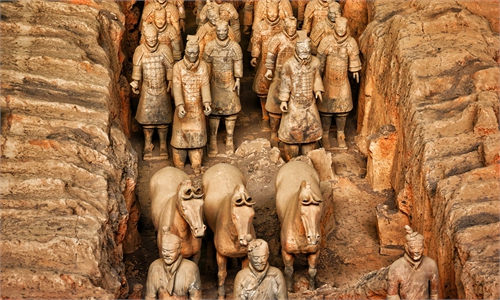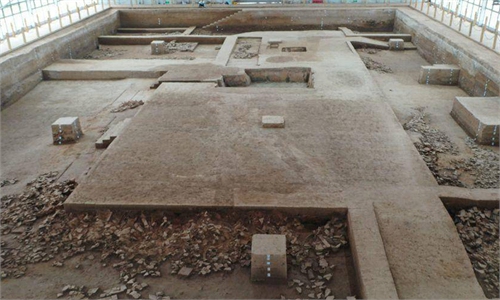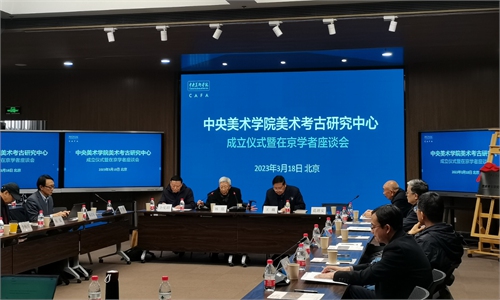ARTS / CULTURE & LEISURE
New art and archaeology center aims to be another cross-field base for China’s national origins project
Working together
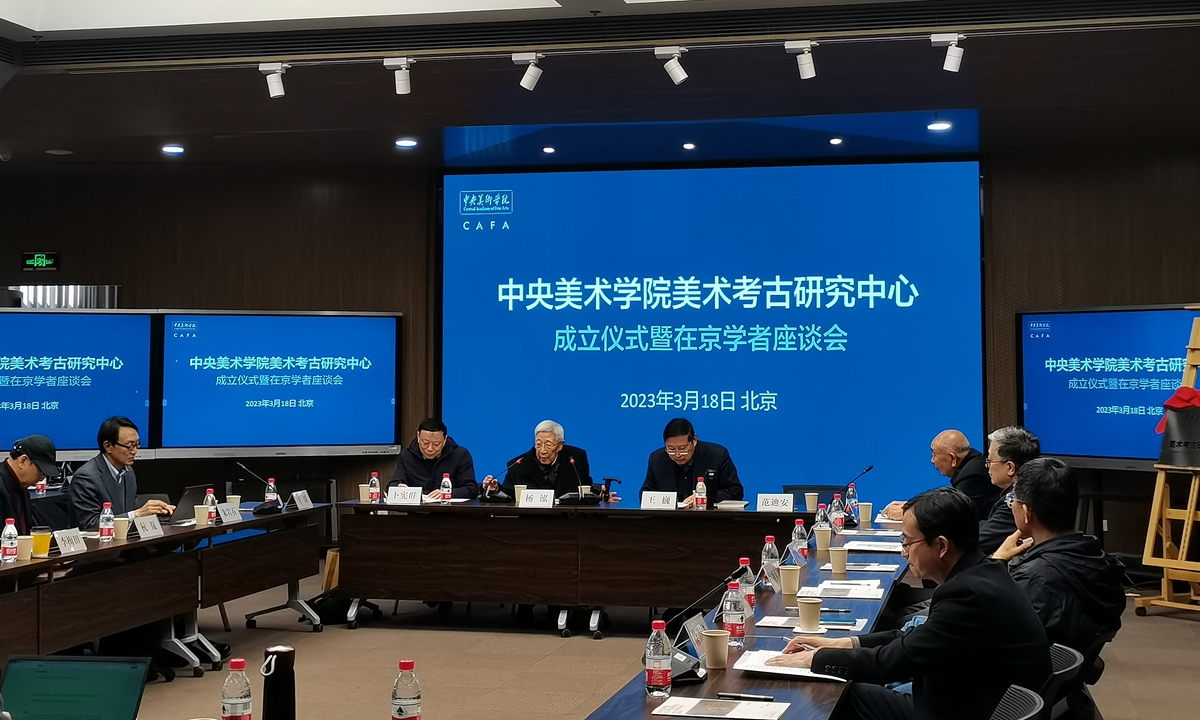
The launch ceremony for the Research Center for Art and Archaeology at the Central Academy of Fine Arts Photo: Li Yuche/Global Times
How can art-inspired interdisciplinary studies improve research into China's ancient civilizations? This was the question discussed on Saturday at the launch ceremony for the Research Center for Art and Archaeology at the Central Academy of Fine Arts, China's only higher-education institution for fine arts under the country's Ministry of Education.The new center was specifically established to act as a cross-fields research platform. It aims to merge "art" and "archaeology" by taking a different approach to researching cultural heritages sites such as the Mogao and Yungang grottoes and incorporating art studies' "fluid" interpretations and methods such as iconology to research archaeological relics.
As both fields research humanity, they can contribute China's more-than-two-decade national project to trace the origins of Chinese civilization, Wang Wei, the project's chief expert, told the Global Times.
Cross-field cooperation
"All roads lead to Rome" was a phrase that Chu Xin, a cultural sociologist, used to describe why interdisciplinary studies have become a "must" for the origins project.
Emphasizing the scope of the project, Wang said that it should not only study ancient culture and societies, but also the artistic "spiritual connotations" relics had in the eyes of ancient people.

A fresco at the Mogao Grottoes Photo: VCG
"This is about looking into ancient people's beliefs and art," he said, adding that bringing aesthetic studies into the mix can help research into ancient cultures such as the 7,000-year-old painted pottery of the Neolithic Yangshao culture."Through traditional archaeology, we have discovered a lot of beautiful historical relics, but lack in-depth studies into their aesthetics, this is why we need art archaeology," Wang remarked.
While the center's approach creates a fresh new angle for the national project, this is not the first time that cross-field combos have contributed to the origins project.
Located in Henan Province, the Erlitou Ruins, a major archaeological site that started to be excavated during phase one (2004-05) of the project, has benefited the most from cross-field studies.
Through means such as DNA studies, technological dating, paleoethnobotany and research by handicraft experts, the site's ancient textiles have revealed that a "system of Chinese etiquette" emerged more than 3,500 to 3,800 years ago at the ruins, which was a capital city during the late Xia Dynasty (c.2070 BC-c.1600 BC), through multi-ethnic infusion, Wang told the Global Times.
Additionally, along the lower reaches of the Yangtze River, the Ruins of Liangzhu City in Hangzhou, Zhejiang Province, was a major subject for the project' phase two investigations. Incorporating digital means such as remote sensing, water conservation and urban planning experts have contributed a great deal to research into the site's ancient dam. Dating back to about 5,000 years ago, the dam is one of the oldest dams ever discovered.
In October 2022, the website of the Qiushi Journal, a flagship magazine of the CPC Central Committee, published an article written by Chinese President Xi Jinping.
Stressing the goal of "heightening historical consciousness and strengthening confidence in Chinese culture through the study of the history of Chinese civilization," Xi emphasized the importance of deepening multidisciplinary research.
"We should strengthen planning and coordination and carry out the project from different perspectives and across multiple disciplines, levels, and dimensions," Xi said. He added that such collaborations should be carried out "between archaeologists and historians and between researchers in the humanities and the natural sciences."
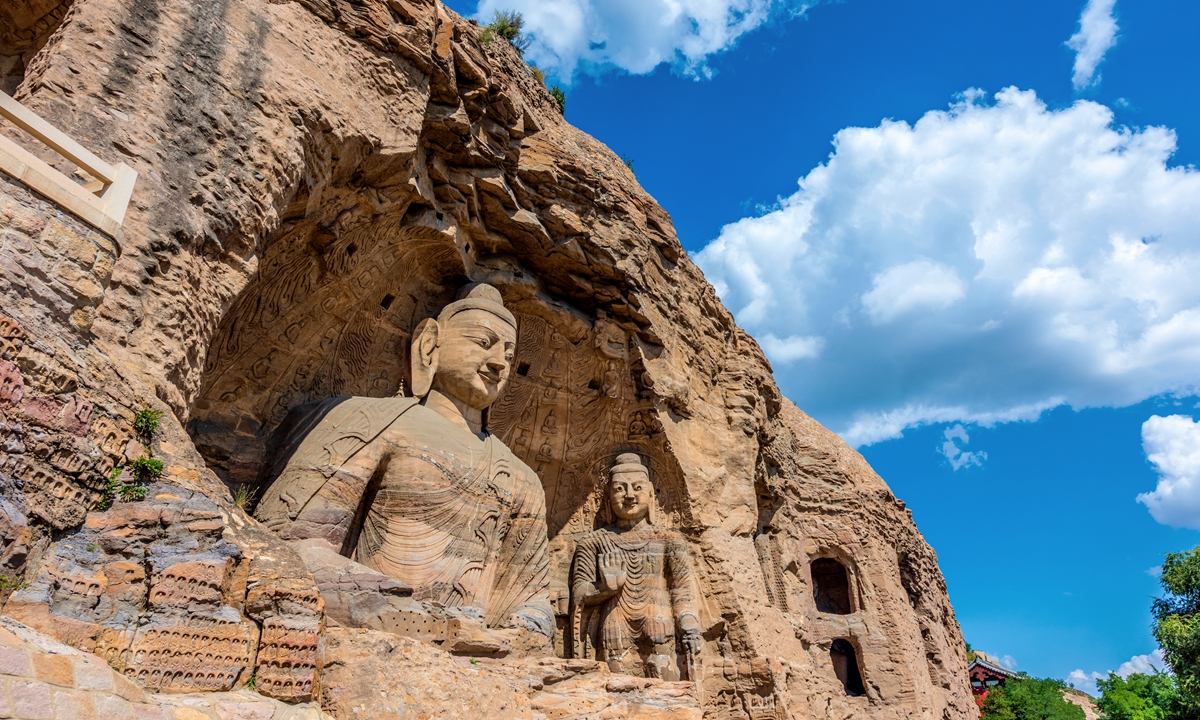
Buddha statues at the Yungang Grottoes Photo: VCG
Culture legaciesIf, as Chu described, such crossover research means walking "step by step" toward the goals of the "grand yet panoramic" origins project, then some of these first steps will require some experimentation in order to find more effective means to research and promote ancient culture. Efforts being carried out at cultural heritage sites such as the Yungang Grottoes, a treasure house of Buddhist art, are one example of how multifield experts are making use of new methods.
Located in North China's Shanxi Province, the UNESCO World Heritage Site boasts many iconic Buddhist statues.
Hang Kan, the director of the Yungang Research Institute, told the Global Times that "art history" can be used to fill in the blanks for what archaeologists are missing.
"Even if we use tools such as 3D printing to reproduce the relics themselves, it is still difficult to recreate the aesthetic ambience of these caves. This is why we need help from more art experts," he noted.
China's top art historian Wu Hung published the book Spatial Dunhuang: Approaching the Mogao Caves in 2022.
Describing the history of the caves as an integrated "art space," Wu's work is a classic example of how art analyses can provide entirely fresh perspectives in the study of cultural heritage sites like Mogao Grottoes, another World Heritage Site.
Sites like the grottoes in Dunhuang and Yungang are filled with frescos and sculptures, which are the perfect subjects for art research, Rong Xinjiang, the president of the Chinese Association of Dunhuang and Turfan Studies, told the Global Times.
"I hope the new center can help make such art-archaeology exchanges more systematic," Rong said.
"It is time for an open art history," Hang noted, revealing that they have launched a program to rediscover the beauty of the Yungang Grottoes with artists. Though the project's schedule has yet to be revealed, this was not the first time the Yungang Grottoes have been brought into the art field.
In 2020, a Yungang Grottoes exhibition, Ode to Great Beauty, was co-launched by the Research Institute and Zhejiang University, in Shanghai. It showed 26 contemporary artworks inspired by the grottoes, including a multimedia art installation that restored the No.12 "musical cave" at the grottoes.
